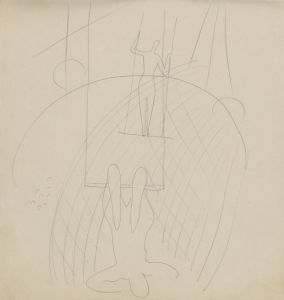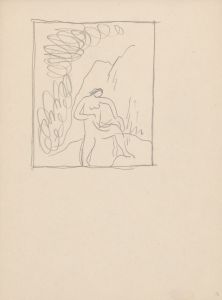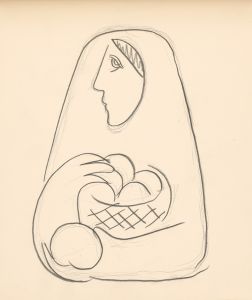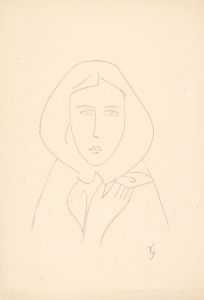
Skicár s rôznymi štúdijnými kresbami III
A hand-painted replica of Mikuláš Galanda’s masterpiece Skicár s rôznymi štúdijnými kresbami III, meticulously crafted by professional artists to capture the true essence of the original. Each piece is created with museum-quality canvas and rare mineral pigments, carefully painted by experienced artists with delicate brushstrokes and rich, layered colors to perfectly recreate the texture of the original artwork. Unlike machine-printed reproductions, this hand-painted version brings the painting to life, infused with the artist’s emotions and skill in every stroke. Whether for personal collection or home decoration, it instantly elevates the artistic atmosphere of any space.
Mikuláš Galanda was a prominent Slovak painter, graphic artist, and illustrator, known for his significant contributions to modern Slovak art in the early 20th century. Born on May 4, 1895, in Turčianske Teplice, then part of the Austro-Hungarian Empire, Galanda became a key figure in the development of Slovak modernism. His work is characterized by a unique blend of traditional Slovak themes with modernist techniques, reflecting the cultural and political changes of his time.
"Skicár s rôznymi štúdijnými kresbami III" is one of Galanda's works that showcases his skill in drawing and his interest in exploring various artistic studies. The title translates to "Sketchbook with Various Study Drawings III," indicating that it is part of a series of sketchbooks where Galanda experimented with different forms, techniques, and subjects. These sketchbooks are crucial for understanding Galanda's artistic process and his development as an artist.
Galanda's education played a significant role in shaping his artistic style. He studied at the Academy of Fine Arts in Budapest and later at the Academy of Fine Arts in Prague. During his studies, he was exposed to various European art movements, including Expressionism and Cubism, which influenced his approach to art. His sketchbooks, including "Skicár s rôznymi štúdijnými kresbami III," reflect this diverse artistic education, as they contain a range of studies from figure drawings to abstract compositions.
The content of "Skicár s rôznymi štúdijnými kresbami III" likely includes a variety of sketches that demonstrate Galanda's exploration of form and composition. While specific details about the individual drawings in this particular sketchbook are not widely documented, it is known that Galanda often focused on themes such as the human figure, Slovak folklore, and everyday life. His sketches were not merely preparatory works but were integral to his artistic expression, allowing him to experiment with ideas that would later appear in his paintings and graphic works.
Galanda was also a member of the "Generation 1909," a group of Slovak artists who were instrumental in introducing modernist ideas to Slovak art. This group sought to break away from the academic traditions of the 19th century and embrace new artistic expressions that reflected the changing social and political landscape of Central Europe. Galanda's work, including his sketchbooks, played a vital role in this cultural shift.
Throughout his career, Galanda faced numerous challenges, including political upheaval and personal hardships. Despite these difficulties, he remained committed to his artistic vision and continued to produce work that was innovative and reflective of his Slovak heritage. His contributions to Slovak art were recognized posthumously, and he is now celebrated as one of the pioneers of modern Slovak art.
In summary, "Skicár s rôznymi štúdijnými kresbami III" by Mikuláš Galanda is an important piece within the context of his oeuvre, offering insights into his artistic process and the development of modern Slovak art. While specific details about the sketchbook's contents are limited, its significance lies in its representation of Galanda's exploration of modernist techniques and Slovak themes.













